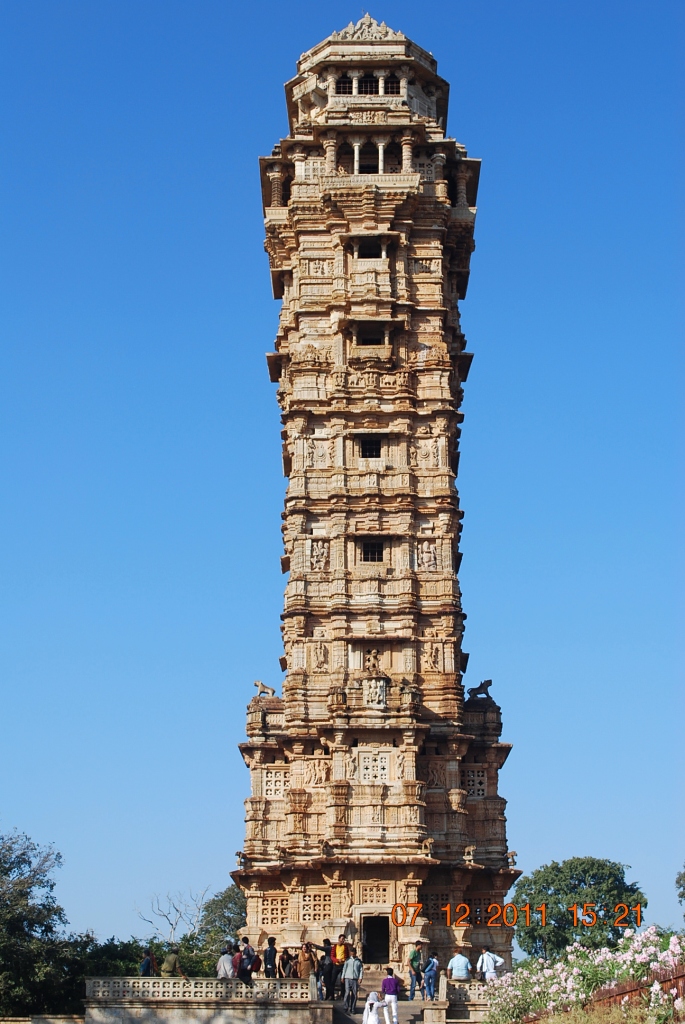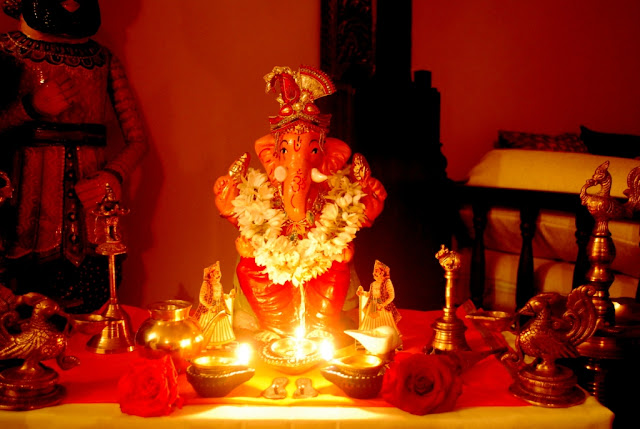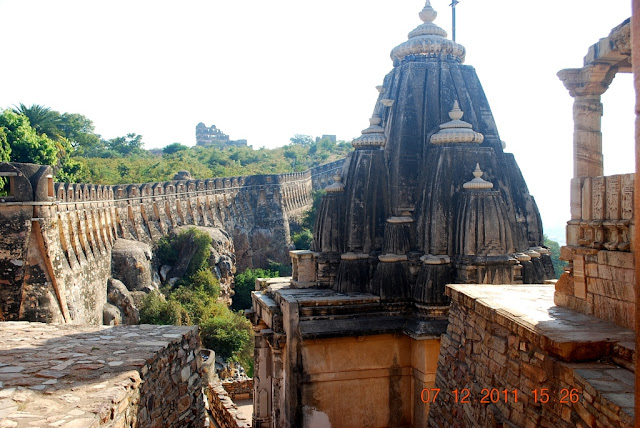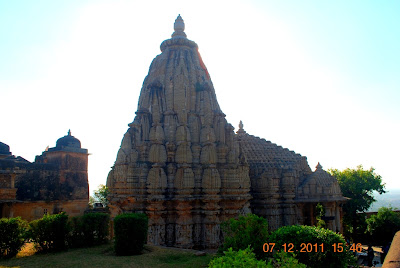Chittorgarh Fort the largest fort in India and the
grandest in the state of Rajasthan. The fort, also known as Chittor, was the
capital of Mewar and was named after Chittrangad Maurya.
Chittorgarh Fort lies at a distance of 112 kms from the
city of Udaipur. This huge fort was built by various Maurya rulers in the 7th
century and covers an area of 700 acres, extending to 3 kms in length and 13
kms in peripheral length. Standing on an elevated hill of
180m, the mighty fort has witnessed three battles.
The fort has a long story of romance, courage,
determination and sacrifice. A glimpse of the fort still makes one to think the
glory of the Rajputs who once lived here. The fort was attacked three times and
every time it got saved by the daring heroism of the Rajput warriors. Every
time, a jauhar (mass suicide) was observed and the womenfolk of the Royalty
never submitted themselves.
This colossal fort is accessible through seven huge
gates (Pols) that are comprised of strong iron spikes and served as a watch
tower in earlier times. Apart from these massive gates, the Fort
has many palaces to boast of including Rana Kumbha Palace and Padmini's Palace,
which are wonders of Rajput architecture.

Vijay Stambh (The Tower of Victory)
Panoramic view of the majestic Chittorgarh Fort from the city
Another view of the majestic Chittorgarh Fort from the city
Mira Temple inside the Fort premises
Saint-poet Mirabai who was an ardent devotee of Lord
Krishna, dedicated her entire life to His worship.
The larger temple in the same compound is the Kumbha
Shyam Temple (Varaha Temple).
Side view of the Varaha Temple of Lord Krishna where
Mira used to worship. The pinnacle of the temple is in a pyramid shape.
An idol of Meerabai praying before Krishna has
now been installed in the temple.
The popular legend associated with her is that with blessings of Krishna, she survived after consuming poison sent to her by her evil brother-in-law.
Idol of Lord Ganesha on the outside wall of Varaha
Temple
Ruins of the Palace of Meera viewed from a majestic
balcony in the palace.
Ruins of the Palace of Meera viewed from a majestic balcony in the palace.
Above all, the fort has towers that depict the
glorious history of the Rajput rulers. Vijay Stambh and Kirti Stambh are the
most famous towers celebrating the victory of Rajputs.
Site protected & preserved by the Archaeological
Survey of India, ASI.
Entrance arch to the Tower of Victory
Entrance arch to the Tower of Victory
Kirti
Stambh is the tower that literally means 'the Tower of
Fame. Built in the 12th century, this tower is dedicated to Adinath ji, the
first Jain thinker. Kirti Stambh is a seven-storied structure with the height
of 22 m.
Vijay
Stambh, literally it means 'the tower of victory'. Vijay Stambh
is the most impressive structure of the Chittorgarh Fort. It was constructed by
Maharana Kumbha to commemorate his victory over Mohammed Khilji in the 15th
century. This giant tower is nine-storied and offers a picture-perfect view of
the down-town from its balconies. This huge tower extends to the height of 122
feet and width of 47 sq ft at the base. The circular stairs of this tower has
157 steps. This imposing tower took 10 complete years to construct.
View of the Mira's palace from a window of Victory Tower
View of the Fateh Prakash palace from a window of Victory Tower. Build by Maharana Fateh Singh this huge palace is of
morden style. This place has been named Fateh Prakesh after Maharana Fateh
Singh. This palace, now a museum, has a rich collection of sculptures from
temples and buildings in the Fort.
Neelkanth Mahadev Temple inside the Fort
This is the place where Rani Padmini commited Johar.
Ala ud din Khilji, Sultan of Delhi, rallied his
forces against Mewar, in 1303 AD. The Chittorgarh fort was till then considered
impregnable and grand, atop a natural hill. But his immediate reason for
invading the fort was his obsessive desire to capture Rani Padmini, the unrivalled
beautiful queen of Rana Ratan Singh and take her into his harem. The Rana, out
of politeness, allowed the Khilji to view Padmini through a set of mirrors. But
this viewing of Padmini further fired Khilji’s desire to possess her. This finally led the 2 parties into a mighty battle.
Khilji won the battle on August 26, 1303. Soon
thereafter, instead of surrendering to the Sultan, the royal Rajput ladies led
by Rani Padmini preferred to die through the Rajput’s ultimate tragic rite of
Jauhar (self immolation on a pyre).
Fort is sometimes referred to as the Water Fort. At its peak, the fort had
84 water bodies, including ponds, wells, and stepwells covering approximately
40% of the fort area. Of these 84 water
bodies, only about 20 exist today.
The wells and stepwells were strategically
located downstream from the ponds in order to conserve water from
overflow. It is said that in a year of
average rains, the water bodies could easily store enough water to last the
residents for over 12 months or could meet the water needs of an army of
50,000.
View of the city from one of the high points of the
Fort. Going with the Rajasthan tradition most of the houses in the city appear
to be painted predominantly in Turquoise Blue.
Gaumukh
Reservoir: A spring feeds the tank from a carved cow’s mouth
in the cliff. This pool was the main source of water at the fort during the
numerous sieges.
Statue of Rani Padmini near the Gaumukhi Water
reservoir.
3 faced idol of Neelkanth Mahadeva.
Closer view
Garden outside queen Padmini’s personal palace.
Photography prohibited inside.
Yes of course, no prizes for guessing that. That's me. Had a
memorable time with friends.
A little of the topic, but I need to share this with
you. I was equally surprised to see this, as you are for sure now. Yes its a LPG cylinder delivery vehicle.
What else could be a bigger way to go Green. Totally
appreciate the efforts of Bharat gas, or perhaps the delivery boy....
This heritage fort and the city of Rajasthan is definitely a
'must-visit' place that cannot be afforded to miss.
Kesariya Baalam aavo ni, Padharo mhare Des re...








































































